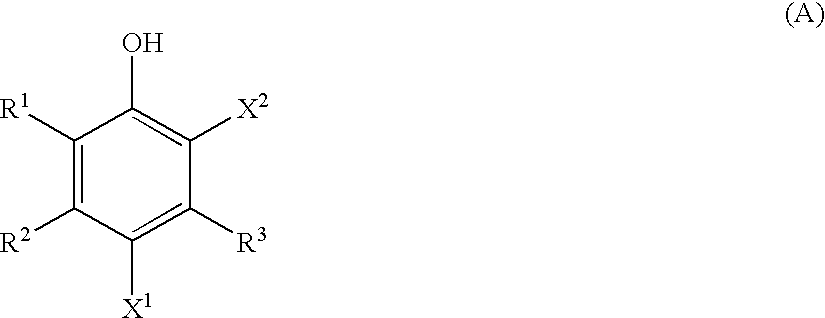Method for producing image and high-speed photothermographic material
a high-speed photothermographic and image technology, applied in the direction of photosensitive materials, photosensitive materials auxiliaries/base layers, instruments, etc., can solve the problems of not only hazardous to the human body, but disadvantageous in terms of production cost, and use of organic solvent as solution medium
- Summary
- Abstract
- Description
- Claims
- Application Information
AI Technical Summary
Problems solved by technology
Method used
Image
Examples
example 1
>
To 700 ml of water, 11 g of alkali-treated gelatin (calcium content .ltoreq.2,700 ppm), 30 mg of potassium bromide and 1.3 g of sodium 4-methylbenzenesulfonate were dissolved at 40.degree. C., pH of the mixture was adjusted at 6.5, and added thereto were 159 ml of an aqueous solution containing 18.6 g of silver nitrate and an aqueous solution containing 1 mol / L of potassium bromide, 5.times.10.sup.-6 mol / L of (NH.sub.4).sub.2 RhCl.sub.5 (H.sub.2 O), and 2.times.10.sup.-5 mol / L of K.sub.3 IrCl.sub.6 over 6 minutes and 30 seconds by the controlled double jet method while keeping pAg at 7.7. Further added thereto were 476 ml of an aqueous solution containing 55.5 mg of silver nitrate and an aqueous halogen salt solution containing 1 mol / L of potassium bromide and 2.times.10.sup.-5 mol / L of K.sub.3 IrCl.sub.6 over 28 minutes and 30 seconds by the controlled double jet method while keeping pAg at 7.7. The pH of the mixture was lowered to effect agglomerative precipitation and desalting,...
example 2
Fabrication of Photothermographic Material
Similarly to Example 1, the coating liquids for the image producing layer and lower protective layer were coated on the PET support by the simultaneous multi-layer coating. Further thereon the two following coating liquids for the intermediate protective layer and top protective layer were coated on the lower protective layer also by the simultaneous multi-layer coating so as to attain the coated amount of solid content of 1.97 g / m.sup.2 and 1.07 g / m.sup.2, respectively, to thereby obtain a photothermographic material.
Preparation of Coating Liquid for Intermediate Protective Layer
A coating liquid for the intermediate protective layer was prepared by mixing 625 g of methyl methacrylate / styrene / 2-ethylhexyl acrylate / 2-hydroxyethyl methacrylate / acrylic acid copolymer latex [copolymerization ratio by weight of 58.9 / 8.6 / 25.4 / 5.1 / 2, glass transition point=46.degree. C. (estimation), solid content=21.5%, containing 100 ppm of Comound "A", containin...
example 3
Samples obtained in Example 1 were exposed using a multi-channel exposure apparatus based on the outer cylinder surface scanning system (equipped with 30 semiconductor laser heads of 50 mW output), and heat-developed similarly to Example 1. The samples of the present invention was proven to give low fog (D.sub.min), sufficient image density (D.sub.max) and small line width variation.
PUM
| Property | Measurement | Unit |
|---|---|---|
| speed | aaaaa | aaaaa |
| speed | aaaaa | aaaaa |
| glass transition point | aaaaa | aaaaa |
Abstract
Description
Claims
Application Information
 Login to View More
Login to View More - R&D
- Intellectual Property
- Life Sciences
- Materials
- Tech Scout
- Unparalleled Data Quality
- Higher Quality Content
- 60% Fewer Hallucinations
Browse by: Latest US Patents, China's latest patents, Technical Efficacy Thesaurus, Application Domain, Technology Topic, Popular Technical Reports.
© 2025 PatSnap. All rights reserved.Legal|Privacy policy|Modern Slavery Act Transparency Statement|Sitemap|About US| Contact US: help@patsnap.com



